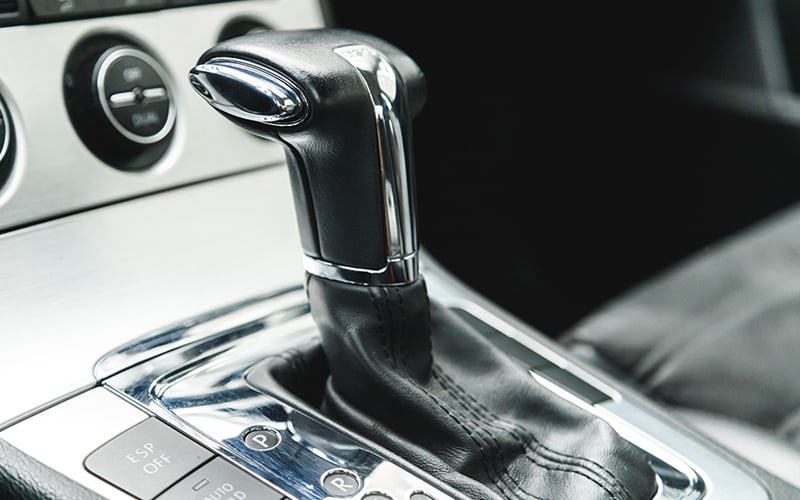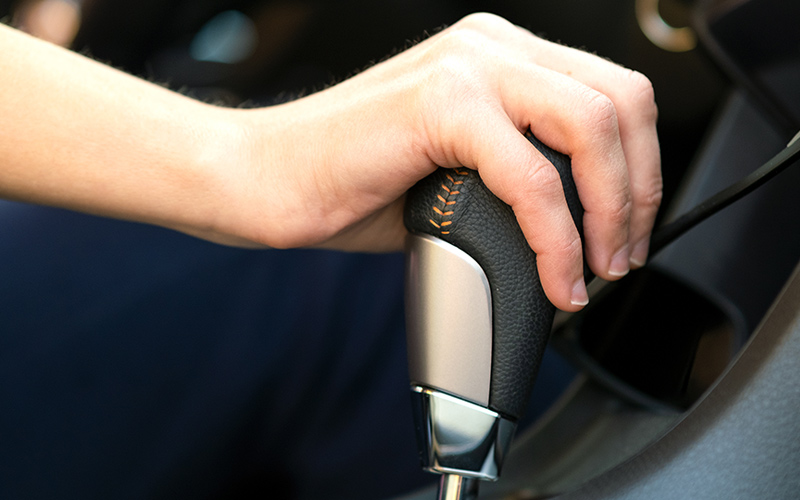Making the Shift from Manual to Automatic Transmission

- Automatic cars are becoming more popular as vehicle technology advances.
- There are a few differences between driving a manual and an automatic car.
- Check out our top tips for driving an automatic car.
The automotive industry is undergoing a transformation. For a long time, manual transmission cars were the norm. However, in recent years, automatic transmissions have gained popularity.
The UK government has proposed to ban the sale of new petrol and diesel cars by 2035 in a bid to accelerate greener transport options. This means the trend towards automatic is set to continue, as electric vehicles become more mainstream.
Continue reading to learn more about what to expect when driving an automatic car.
What's the difference between a manual and an automatic car?
The main difference between driving a manual or automatic vehicle is the level of driver involvement.
Manual cars have three pedals: a clutch, a brake, and an accelerator. Drivers need to use these pedals in conjunction with the gearstick to change the car’s gear level, depending on the speed and driving conditions.
An automatic car’s gearbox does the hard work for you! There are only two pedals; the brake and the accelerator. These cars still have a gear selector, but you do not have to press the clutch to move through the gears as you would with a manual car. The gear selector provides the following options:
- Drive: In this mode, the car will select the appropriate gear, allowing the vehicle to move forward normally.
- Reverse: Select this mode when you need the car to move backwards.
- Neutral: This functions the same as in a manual vehicle. It is to be used when the car is stationary.
- Park: This should be engaged only when the car has come to a complete stop.

Why make the switch to an automatic car?
There are many benefits to driving an automatic car over a manual car. We’ve listed our top five below.
1. Ease of driving
Driving an automatic car is much simpler than driving a manual car, as you don’t need to think about changing gears. It’s all done for you, which means you can relax as you drive. You won’t have to worry about hill starts or stalling at junctions, you can simply enjoy the journey, stress-free.
2. Smoother journeys
Automatic cars allow for a smoother ride, due to the absence of manual gear changes. You’ll find the transition through gears in an automatic car to be a seamless process, which is more comfortable for driver and passengers alike.
3. Improved fuel economy
Modern automatic vehicles are optimised to deliver improved fuel efficiency. This allows you to save money at the pumps.
4. Greater accessibility
Those with mobility issues may find automatic vehicles easier to drive than manual cars.
5. Perceived safety
Many drivers feel safer in an automatic car because you can keep both hands on the wheel and focus all your attention on the road ahead.
Tips for driving an automatic car
If you have never driven an automatic car before, getting used to the differences can be a challenge at first. However, many drivers who've made the switch are adamant they would never go back to a manual! We have compiled a few tips to help you make a smooth transition into the world of automatic driving.
1. Familiarise yourself with the vehicle
Take some time to understand your new automatic car's controls, including the gear shift and pedals. Practice parking, reversing, and using the gear shift to gain confidence.
Begin with shorter trips and gradually increase your driving time as you become more comfortable with things. You'll soon get to grips with it!
While it might seem natural to use both feet for the pedals, it’s advised that you only use your right foot and move it between the pedals accordingly.
2. Tweak your driving style
Although driving an automatic vehicle is much simpler than driving a manual car, it may take some getting used to. Be mindful of the fact automatic vehicles will creep forward slightly when you take your foot off the brake. This feature is really useful in stop-start traffic, allowing you to move forward more smoothly than you would in a manual car.
You'll also need to stay mindful of your speed as the acceleration in an automatic is much smoother. You could find yourself cruising at faster speeds without noticing at first.
3. Maintain your usual road safety
Don’t get complacent! Although automatic vehicles can take away some of the stress of driving, you still need to maintain good safety habits while driving. Always stay alert and be considerate of other road users.
Transitioning from a manual car to an automatic can offer an array of benefits. It’s no wonder they’re growing in popularity. As we head towards an electrified future, it makes sense to embrace the change.
There are a wide range of automatic vehicles available on the Motability Scheme. Simply filter by transmission on our Motability car search to view the selection.
Related articles
Electric cars under £1,000 Advance Payment on the Motability Scheme